The NVIDIA GeForce RTX 2060 6GB Founders Edition Review: Not Quite Mainstream
by Nate Oh on January 7, 2019 9:00 AM ESTPower, Temperature, and Noise
As always, we'll take a look at power, temperature, and noise of the RTX 2060 Founders Edition, though most of the highlights and trends we've seen twice before with the RTX 2080 Ti, RTX 2080, and RTX 2070 Founders Edition launches. For the most part, the dual axial fan open air design provide straightforward benefits in lower noise and cooling, which counterbalences the atypically large GPUs and new fixed-function hardware.
As this is a new GPU, we will quickly review the GeForce RTX 2060's stock voltages and clockspeeds as well.
| NVIDIA GeForce Video Card Voltages | ||
| Model | Boost | Idle |
| GeForce RTX 2060 (6GB) Founders Edition | 1.050V | 0.725V |
| GeForce RTX 2070 Founders Edition | 1.050v | 0.718v |
| GeForce GTX 1060 6GB Founders Edition | 1.062v | 0.625v |
The voltages are broadly comparable to the preceding 16nm GTX 1070. In comparison to pre-FinFET generations, these voltages are exceptionally lower because of the FinFET process used, something we went over in detail in our GTX 1080 and 1070 Founders Edition review. As we said then, the 16nm FinFET process requires said low voltages as opposed to previous planar nodes, so this can be limiting in scenarios where a lot of power and voltage are needed, i.e. high clockspeeds and overclocking. Of course, Turing (along with Volta, Xavier, and NVSwitch) are built on 12nm "FFN" rather than 16nm, but there is little detail on the exact process tweaks.
Power Consumption
The TDP increase to 160W brings the RTX 2060 (6GB) in between the 180W GTX 1080/1070 Ti and 150W GTX 1070. In turn, load consumption is more-or-less on that level, and nothing dissimilar to what we've seen. This also means that efficiency is around the same relative to performance, as opposed to the RTX 2070, 2080, and 2080 Ti.
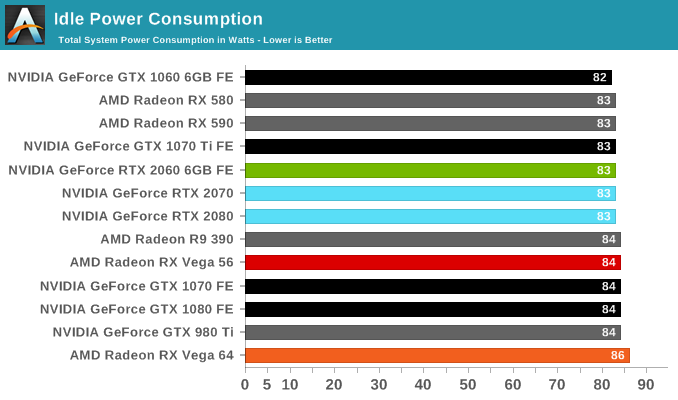
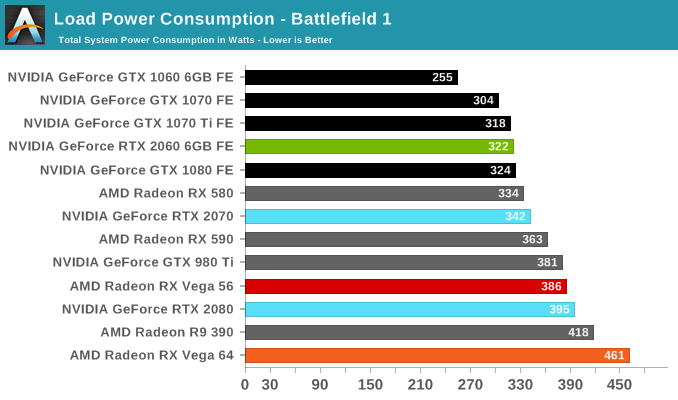
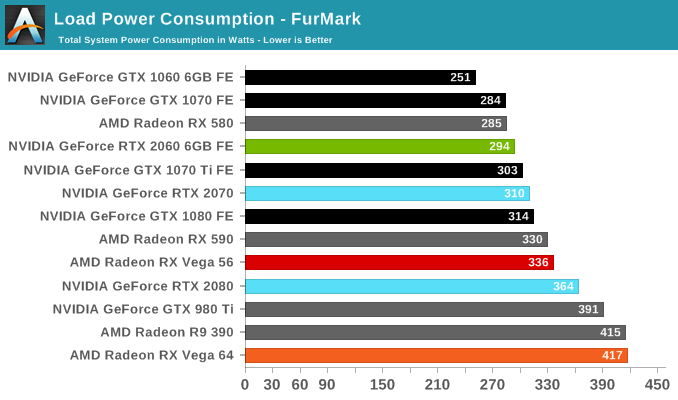
Temperature & Noise
With an open air cooler design with dual axial fans, the results are in line with what we've seen with the other RTX Founders Editions.
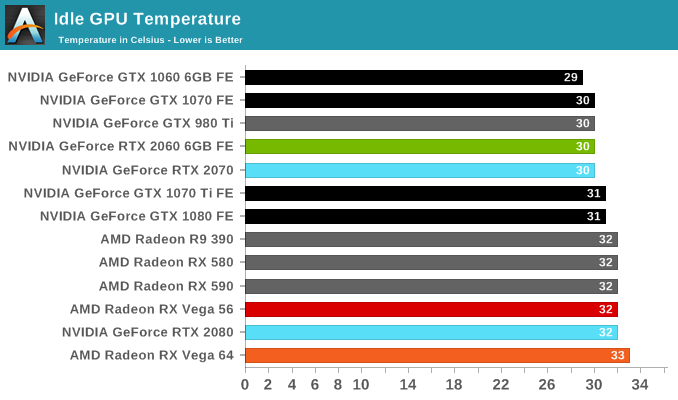
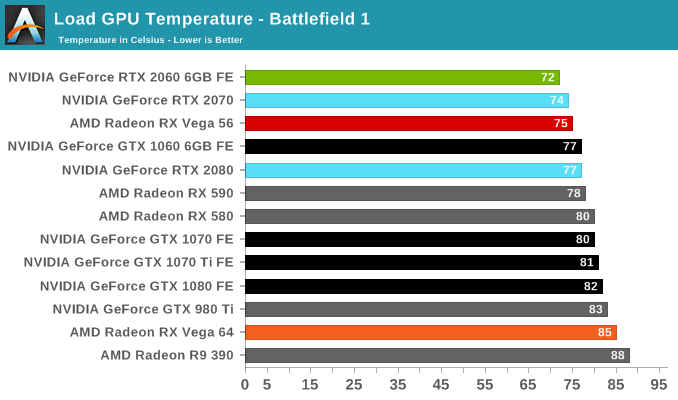
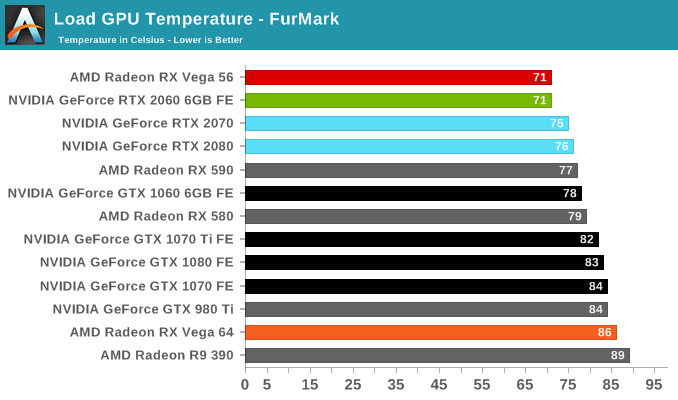

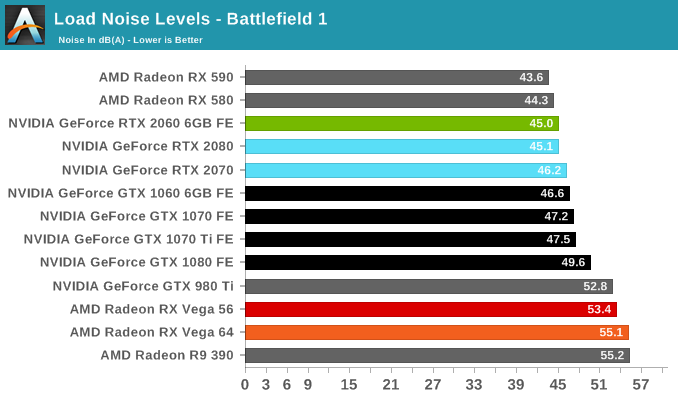
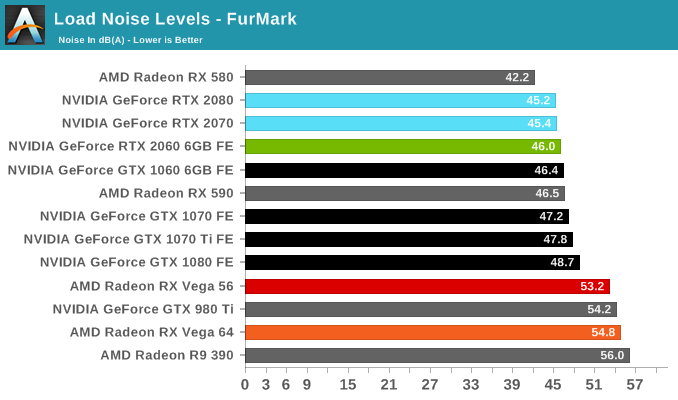










134 Comments
View All Comments
dave_the_nerd - Monday, January 7, 2019 - link
Selfish opinion: but I really would have appreciated a 970 in the graph, in addition to the 1060. (Only two generations old, same market segment and similar price point.)CiccioB - Monday, January 7, 2019 - link
Yes, also the 1080Ti is missing, and it is quite a pity, especially for the compute tests.Icehawk - Tuesday, January 8, 2019 - link
I wish they would show the 970 in tests too - partially because it was a popular card and most folks wait a couple of cycles to update and partially because that is what I have :) I would like to upgrade as it struggles at 4k and even 1440 on some of the latest games but I can’t stomach $500+poohbear - Monday, January 7, 2019 - link
Uhm, you didn't test for its RTX performance? Wasn't that the main contention with a GTX 2060????boozed - Monday, January 7, 2019 - link
Still waiting for real-world tests?saiga6360 - Tuesday, January 8, 2019 - link
Battlefield V? Crappy game but it does have ray tracing implemented.RamIt - Monday, January 7, 2019 - link
This card is worth no more than $199 us dollars. Sorry Nvidia your pricing stricture keeps me from buying your products from now on.RamIt - Monday, January 7, 2019 - link
Sorry for the typos. A little bit hammered at the moment but certainly mean what I implied.mkaibear - Tuesday, January 8, 2019 - link
Don't you buy on price/performance then? That seems odd.For the price this offers great performance.
sing_electric - Tuesday, January 8, 2019 - link
There's a lot of good value at ~$200 (RX 580, 1060 6GB since prices are being dragged down by the 2060), and then essentially nothing worth buying until the 2060 at $350, and then nothing until the 2070. (You could make a case for a Vega 64 on sale for $350, but even then, it's more power-hungry, etc.).So if GPU performance is important, and your budget can accommodate a $250-400 GPU, the 2060 is the one to buy. People can complain about $350 being a "high end" price, but the fact is, it's WAY faster than what you get for spending say, $280 on an RX 590.